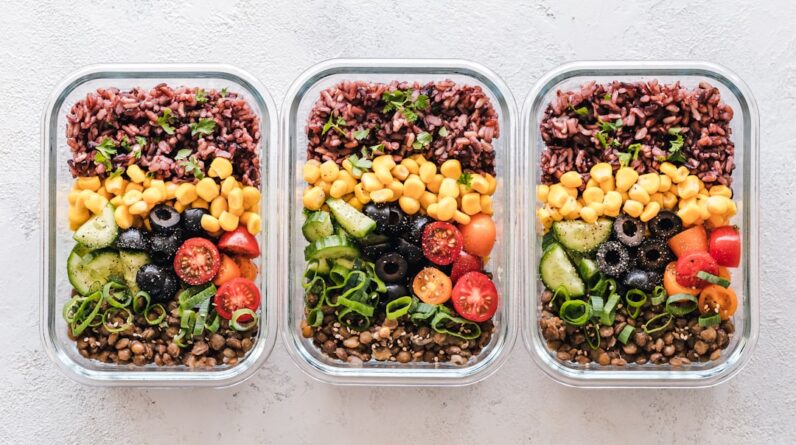The elimination diet is a structured nutritional strategy designed to identify food sensitivities and allergies by temporarily removing specific foods from the diet. This approach is predicated on the idea that certain foods may trigger adverse reactions in some individuals, leading to a range of symptoms that can affect overall health and well-being. By systematically eliminating these potential culprits, individuals can gain insights into their body’s responses to various foods, ultimately leading to a more tailored and healthful eating plan.
Typically, an elimination diet begins with a period of strict avoidance of common allergens and irritants, such as gluten, dairy, soy, eggs, nuts, and certain additives. This phase can last anywhere from two to six weeks, depending on individual circumstances and the guidance of a healthcare professional. During this time, individuals are encouraged to focus on whole, unprocessed foods that are less likely to provoke reactions.
The goal is to allow the body to reset and heal, providing a clearer picture of which foods may be problematic when reintroduced later.
Key Takeaways
- The elimination diet approach involves removing potential trigger foods from your diet to identify and address food sensitivities and allergies.
- Common food sensitivities and allergens include dairy, gluten, soy, eggs, and nuts, among others.
- Creating a customized elimination diet plan involves working with a healthcare professional to ensure nutritional adequacy and proper elimination of trigger foods.
- Monitoring and tracking symptoms is crucial during an elimination diet to assess the impact of removed foods on your health.
- Reintroducing foods and monitoring reactions helps to identify specific triggers and determine which foods can be safely reintroduced into your diet.
Identifying Common Food Sensitivities and Allergens
Food sensitivities and allergies can manifest in various ways, making them challenging to identify without a systematic approach. Common symptoms include gastrointestinal distress, skin reactions, respiratory issues, and even neurological symptoms such as headaches or fatigue. Understanding these manifestations is crucial for anyone considering an elimination diet.
For instance, lactose intolerance may lead to bloating and diarrhea after consuming dairy products, while gluten sensitivity might result in abdominal pain or fatigue following the intake of wheat-based foods. Certain foods are notorious for causing sensitivities or allergic reactions. Dairy products, for example, are a common source of discomfort for many individuals due to lactose intolerance or casein sensitivity.
Similarly, gluten—a protein found in wheat, barley, and rye—can trigger symptoms in those with celiac disease or non-celiac gluten sensitivity. Other common allergens include peanuts, tree nuts, shellfish, soy, and eggs. Recognizing these potential triggers is essential for effectively implementing an elimination diet and ensuring that individuals can pinpoint their specific sensitivities.
Creating a Customized Elimination Diet Plan

Crafting a personalized elimination diet plan requires careful consideration of individual dietary habits, preferences, and health goals. The first step is to identify which foods will be eliminated based on known sensitivities or common allergens. This process often involves a thorough review of one’s eating patterns and any previous experiences with food-related issues.
For example, if an individual has experienced digestive discomfort after consuming dairy products in the past, it would be prudent to eliminate dairy from their diet during this phase. Once the elimination list is established, it’s essential to create a meal plan that emphasizes nutrient-dense foods that are less likely to provoke reactions. This may include fruits, vegetables, lean proteins such as chicken or fish, and gluten-free grains like quinoa or rice.
It’s also important to consider food preparation methods; steaming or baking foods can help retain their nutritional value while minimizing the risk of added irritants found in processed foods. Additionally, keeping a food diary during this phase can help track meals and any symptoms that arise, providing valuable insights for later analysis.
Monitoring and Tracking Symptoms
| Date | Symptom | Severity | Notes |
|---|---|---|---|
| 01/01/2022 | Fever | Moderate | Took medication |
| 01/02/2022 | Cough | Mild | Drank hot tea |
| 01/03/2022 | Headache | Severe | Rest and hydration |
Monitoring and tracking symptoms during the elimination phase is a critical component of the process. Individuals should pay close attention to any changes in their physical or emotional well-being as they remove specific foods from their diet. This can include noting improvements in energy levels, digestive health, skin clarity, or mood stability.
Keeping a detailed record of daily food intake alongside any symptoms experienced can help establish correlations between certain foods and adverse reactions. Utilizing tools such as symptom trackers or mobile applications can enhance this monitoring process. These tools allow individuals to log their meals and symptoms in real-time, making it easier to identify patterns over time.
For instance, if someone notices that their headaches consistently improve during the elimination phase but return after reintroducing a specific food, this information can be pivotal in determining food sensitivities. The more meticulous the tracking process, the clearer the insights will be when it comes time to reintroduce foods.
Reintroducing Foods and Monitoring Reactions
The reintroduction phase is where the elimination diet truly reveals its value. After the initial elimination period has concluded and symptoms have stabilized, individuals can begin to systematically reintroduce eliminated foods one at a time. This process should be approached with caution; ideally, each food should be reintroduced over several days while monitoring for any adverse reactions.
For example, if gluten is being tested, an individual might consume a small amount of bread on the first day and then observe for any symptoms over the next few days before moving on to another food. This gradual approach allows for clear identification of any problematic foods without overwhelming the body with multiple variables at once. If a reaction occurs after reintroducing a specific food, it’s essential to document the symptoms and consider eliminating that food again for an extended period before testing it once more later on.
This methodical reintroduction not only helps clarify which foods are safe but also reinforces the importance of listening to one’s body throughout the process.
The Role of Probiotics and Gut-Healing Foods

Incorporating probiotics and gut-healing foods into an elimination diet can significantly enhance gut health and overall well-being. Probiotics are beneficial bacteria that support digestive health by promoting a balanced gut microbiome. Foods rich in probiotics include fermented items such as yogurt (if dairy is tolerated), kefir, sauerkraut, kimchi, and kombucha.
These foods can help restore gut flora that may have been disrupted by food sensitivities or poor dietary choices. In addition to probiotics, incorporating gut-healing foods can further support digestive health during an elimination diet. Bone broth is often touted for its healing properties due to its rich collagen content and amino acids that promote gut lining integrity.
Similarly, foods high in fiber—such as fruits, vegetables, and whole grains (if gluten-free)—can aid digestion by promoting regular bowel movements and feeding beneficial gut bacteria. By focusing on these supportive foods during both the elimination and reintroduction phases, individuals can foster a healthier gut environment that may mitigate future sensitivities.
Lifestyle Factors for Gut Health Optimization
Beyond dietary choices, several lifestyle factors play a crucial role in optimizing gut health during an elimination diet. Stress management is one such factor; chronic stress can negatively impact gut function by altering gut motility and increasing inflammation. Techniques such as mindfulness meditation, yoga, or deep-breathing exercises can help reduce stress levels and promote a healthier digestive system.
Sleep quality is another vital component of gut health. Insufficient sleep can disrupt hormonal balance and impair immune function, both of which are essential for maintaining a healthy gut microbiome. Prioritizing restorative sleep by establishing a consistent sleep schedule and creating a calming bedtime routine can significantly benefit overall health during an elimination diet.
Additionally, regular physical activity supports digestion by promoting healthy circulation and reducing stress levels; even moderate exercise like walking can have positive effects on gut health.
Seeking Professional Guidance for Elimination Diet Success
While an elimination diet can be highly effective for identifying food sensitivities and improving overall health, seeking professional guidance is often beneficial for ensuring success. Registered dietitians or nutritionists with experience in elimination diets can provide personalized support throughout the process. They can help individuals navigate potential pitfalls, ensure nutritional adequacy during the elimination phase, and offer strategies for effective symptom tracking.
Moreover, healthcare professionals can assist in interpreting results from the reintroduction phase and provide recommendations based on individual responses to various foods. They may also suggest additional testing if necessary or help address underlying issues that could be contributing to food sensitivities. By collaborating with professionals who understand the complexities of nutrition and gut health, individuals can enhance their chances of successfully implementing an elimination diet while minimizing risks associated with self-guided approaches.
FAQs
What is a gut health elimination diet?
A gut health elimination diet is a temporary eating plan that involves removing certain foods from your diet in order to identify and eliminate potential triggers for digestive issues and improve gut health.
Why would someone go on a gut health elimination diet?
People may go on a gut health elimination diet to identify and eliminate foods that may be causing digestive issues such as bloating, gas, diarrhea, or constipation. It can also help to improve overall gut health and reduce inflammation in the digestive system.
What foods are typically eliminated on a gut health elimination diet?
Common foods that are eliminated on a gut health elimination diet include gluten, dairy, soy, eggs, nuts, and certain fruits and vegetables. These foods are often known to be common triggers for digestive issues and inflammation.
How long does a gut health elimination diet typically last?
A gut health elimination diet typically lasts for a few weeks to a few months, depending on individual needs and the guidance of a healthcare professional. After the elimination phase, foods are gradually reintroduced to identify any triggers for digestive issues.
Is a gut health elimination diet suitable for everyone?
A gut health elimination diet may not be suitable for everyone, especially those with certain medical conditions or nutritional needs. It is important to consult with a healthcare professional or a registered dietitian before starting a gut health elimination diet.








